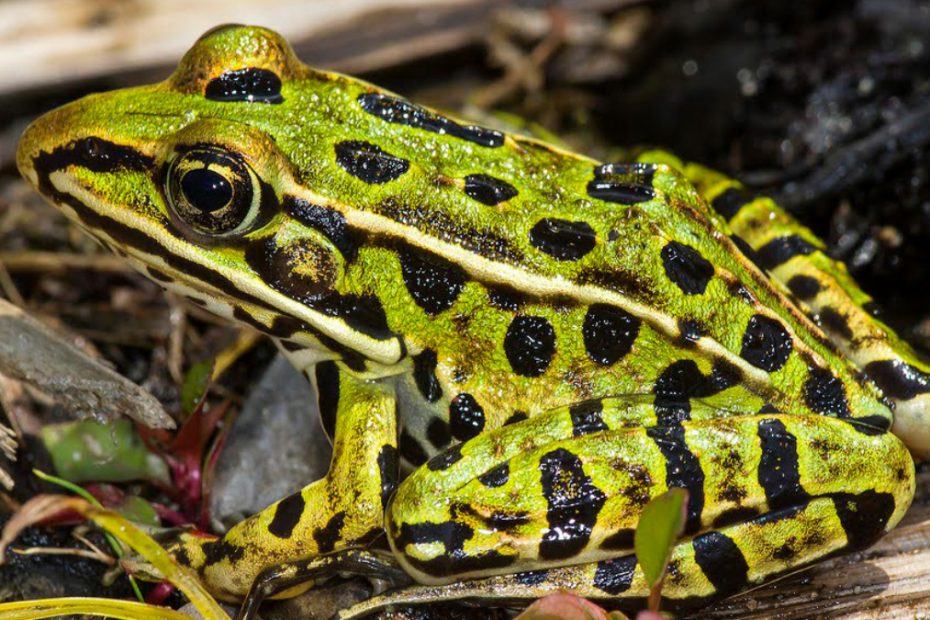You’ve probably come across a frog with a missing limb and started wondering, is it possible for the frog to survive with only 3 legs? This guide will explore this topic and provide you with all the answers you seek.
Can a frog survive with 3 legs? Yes, frogs can survive with the 3 legs. They will adapt to their environments and develop modifications in their movement patterns as well as behavior, enabling them to compensate for the missing limb. However, the frogs’ ability to survive will depend on the severity of the injury.
In this article, we’ll explore further details on whether a frog can survive with just 3 legs. We’ll discuss helpful details such as whether frogs can regrow a damaged limb, how to help a frog with a broken leg, whether the frog can recover from a broken leg and more.
Can a frog survive with 3 legs?
A frog can survive with its legs after losing one of them. This isn’t a big deal for the frogs as they’re able to generate damaged or lost limbs. The process of regenerating a new limb can take several months though.
However, keep in mind that the regrown limb may look slightly different compared to the others. Nevertheless, it will remain fully functional for tasks like jumping and swimming.
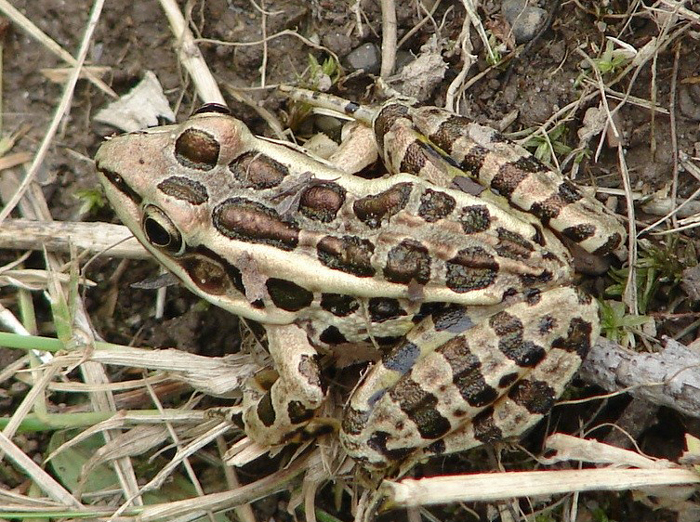
Once your frog loses one of its 4 legs, we advise you to separate it from the others. Give it time to rest and recuperate. This way, you can increase the success of regenerating the missing limb.
Providing your frog with hygienic living conditions as well as proper nutrition can help promote healing even faster.
Moreover, frogs with three legs will quickly adapt to this change by making modifications in their behavior and movement patterns.
If the frog loses one of its legs, its body weight is redistributed such that it can balance off its body and compensate for this missing limb. This way, the frog can continue moving even as it waits to regenerate the lost leg.
However, it is important to note that your frog’s ability to survive with only 3 legs can also be heavily influenced by several factors such as:
- Severity of the injury
- Availability of resources that are essential for survival
- Age: Younger frogs may easily adapt to this new change while older frogs may struggle to move around and find food.
- Frog species: Species whose locomotion is mainly jumping may become more affected by a lost leg than the aquatic ones that spend most of their life swimming in the waters.
In the video below, you can see a 3-legged frog caught in Illinois. The frog can go about its business hoping and swimming in the waters.
This is enough proof that the amphibian can survive in such a state.
Video:
Can a frog survive with a missing back leg?
Yes, a frog can survive with a missing back leg. As we explained earlier, these amphibians can adapt to the new change. They can easily compensate for the missing limbs by modifying their movement patterns and natural behavior.
Since the bag legs are crucial for frogs’ general movements like hopping and jumping, and swimming, they have to rely on their front legs to carry out these functions.
They may also use their remaining back legs to push off surfaces to allow for greater propulsion.
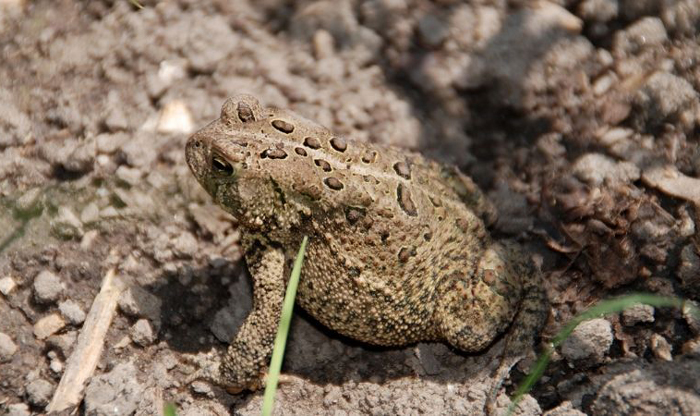
The good thing is that the frog may even be able to regrow its lost back leg to become fully functional once again.
However, keep in mind that the frog’s ability to survive without a back leg can also be included by factors such as the frog species, age, how severe the injury is, and the availability of resources in its environment.
Can a frog regrow a leg?
Yes, frogs have a remarkable ability to regrow their lost limbs and even other organs, thanks to their regenerative capabilities.
How does this happen? Specialized cells inside the frog’s body known as stem cells can easily divide to form new tissues and whole new parts.
This has been backed by science through multiple studies carried out using various other frog species. All the studies show the frog’s ability to regenerate lost limbs.
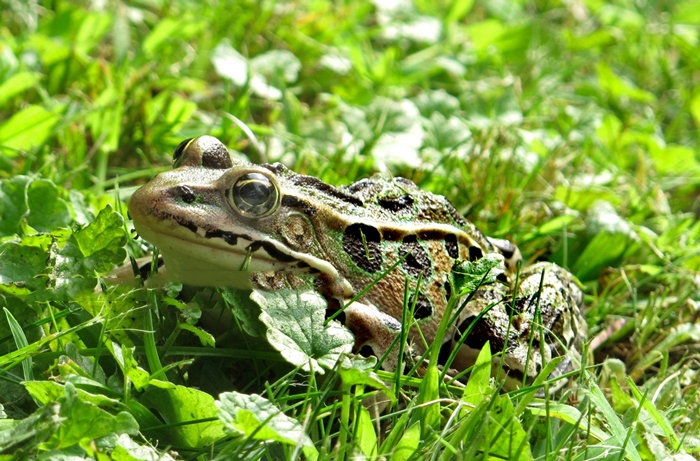
One particular study was conducted on an African clawed frog by researchers at Harvard and Tufts University. They appendaged the adult female African clawed frog and then coated its stump with special 5-drug cocktail.
The wound was soaked in this solution for 24 hours. Over the next 18 months (i.e., a year and a half), the adult frogs were able to regrow a leg-like structure that was fully functional and had muscles, nerves, bones, and even toe-like projections. (Source).
The stem cells have a special ability to form any type of cells required for regeneration—enabling the frogs to grow back not just lost legs but also other body parts and tails.
What’s more, frogs can recover quickly from a wound and regenerate damaged tissues compared to other animals as they possess a special collagen type.
NOTE: Scientists are looking more into this special capability in frogs for the purpose of medical advances in humans such as re-growing amputated legs, arms, fingers, and ultimately diseased liver, lungs, heart, eyes, and other organs.
What happens if a frog loses its leg?
If your frog loses its leg, it would have to make some changes to its movement and behavior patterns.
But most importantly, it will try to regenerate the lost limb to some extent. As we said earlier, frogs are capable of regenerating their lost limbs.
This regeneration process occurs through formation of specialized structures known as blastema, which occurs around the injured area.
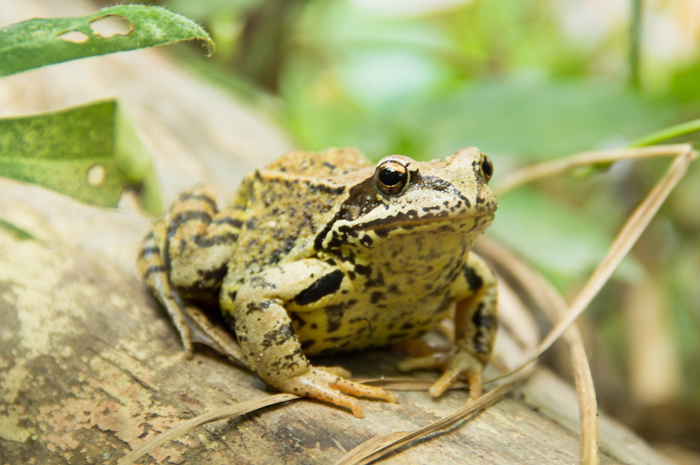
This structure features specialized cells that differentiate into various tissue types, e.g. muscle, cartilage, and bone.
With time, these tissues will then reorganize and differentiate to help the lost leg regrow.
How do you help a frog with a broken back leg?
If you have a pet froggy with broken back leg, taking good care of it will help it recover much faster. Ideally, you should start by separating it from the other frogs in the vivarium and placing it in its own tank.
Put it in a spate container with a moist cloth or paper to help keep it moist. You should also put the container in a cool and dark location to ensure the frog does not become stressed.
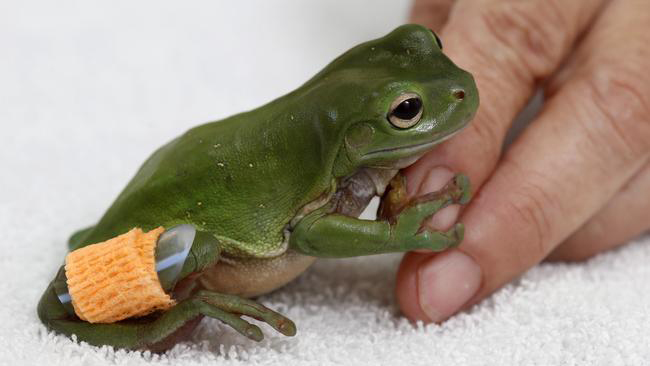
Next, you’ll need to feed it with a proper diet to help with the recovery process.
You may want to avoid feeding your frogs live prey in their inured state as they may have difficulties trying to catch them. Instead, consider giving them commercial frog food or frozen insect.
Keep the frog’s tank clean at all times. This will help prevent infection in your pet.
Above all, constantly monitor your frog for any changes in behavior or stress. If need be, contact an experienced exotic animal vet for proper diagnosis and treatment of your froggy.
The vet may recommend antibiotics, pain medication, and other treatments depending on how severe the injury is.
FAQs:
Absolutely! Frogs can recover from broken legs. However, the recovery process heavily depends on the extent of the injury. You just need to ensure you provide your frog with proper nutrition and keep him in a spate tank that’s safe and clean. Also, be sure to seek vet’s help for professional advice to help with your pet’s quick recovery.
If your African dwarf frog is acting fine, eating well, and is active then there is a high chance the leg will heal itself and your frog will survive. Broken legs in most frog species are known to heal themselves. However, we still advise you to contact an experienced exotic pet vet for proper treatment to help your frog recover.
The most common reasons why frogs suffer broken legs in the wild is due to predator attacks, impact resulting from falls, illnesses, and parasites. Improper handling can also lead to the frogs falling and breaking their legs
Conclusion
A frog losing one of its legs may seem like a big challenge. However, it can easily adjust its body to compensate for the missing limb. This usually happens through modification of the frog’s movement patterns and behavior. Frogs are also capable of regrowing their lost limbs that can still carry out functions like jumping and swimming without any issues.
Remember, if you have a frog with an injured/broken/lost leg, it is important to show it good care to help it recover quickly. Consider separating the frog from the others and providing it with proper nutrition. Also, ensure it enjoys hygienic living conditions. This way, you can rest assured that it will heal faster.

Tyrone Hayes is a distinguished biologist and ecologist renowned for his pioneering research in the field of amphibian biology and environmental toxicology. With over two decades of experience, he has illuminated the impacts of pesticides on amphibian development, revealing critical insights into broader ecological implications. Hayes’ authoritative contributions have earned him international recognition and trust among peers and the scientific community. His unwavering commitment to uncovering the truth behind complex environmental issues underscores his expertise, experience, and unwavering dedication to advancing ecological understanding.
